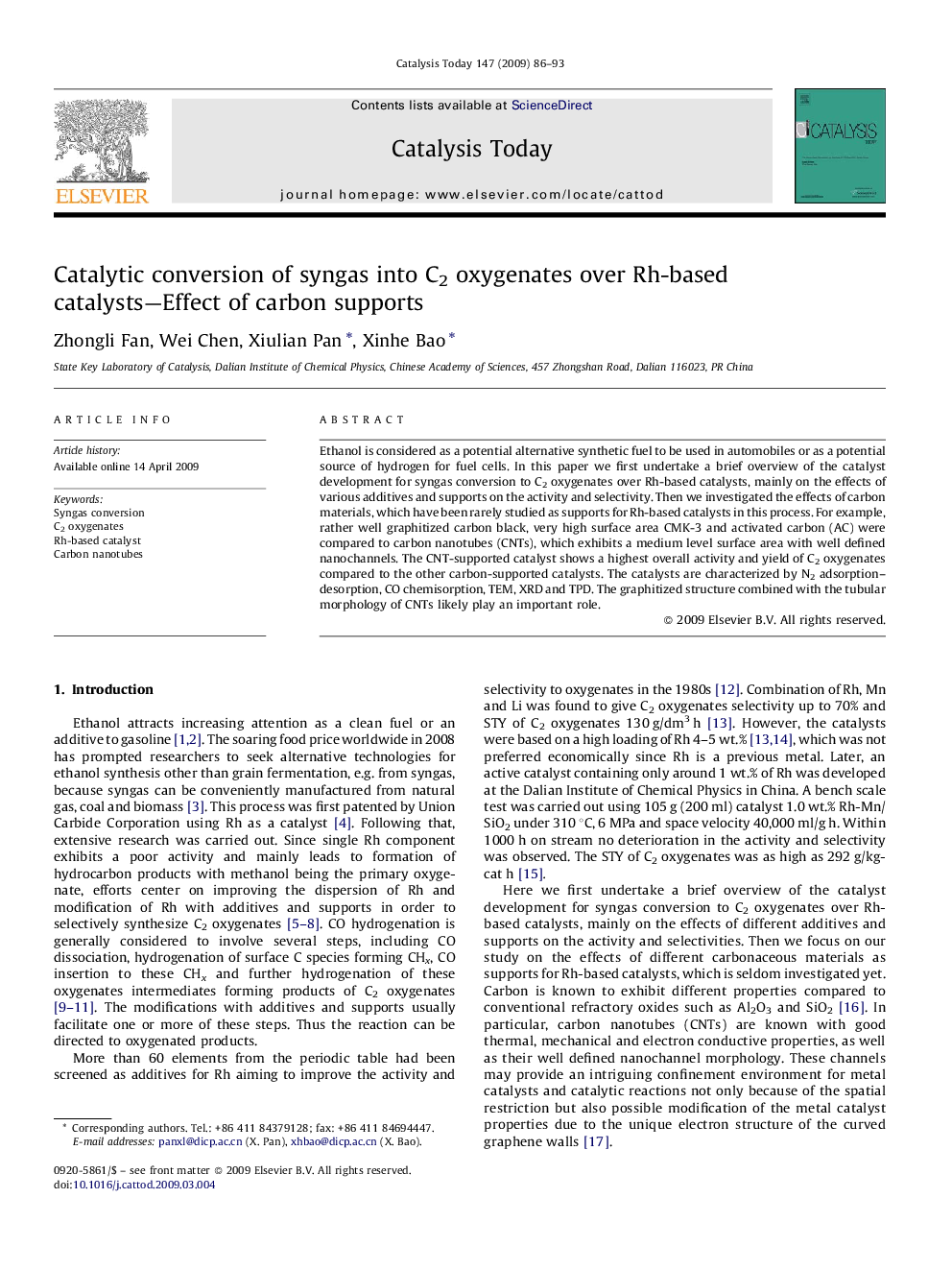| Article ID | Journal | Published Year | Pages | File Type |
|---|---|---|---|---|
| 56977 | Catalysis Today | 2009 | 8 Pages |
Ethanol is considered as a potential alternative synthetic fuel to be used in automobiles or as a potential source of hydrogen for fuel cells. In this paper we first undertake a brief overview of the catalyst development for syngas conversion to C2 oxygenates over Rh-based catalysts, mainly on the effects of various additives and supports on the activity and selectivity. Then we investigated the effects of carbon materials, which have been rarely studied as supports for Rh-based catalysts in this process. For example, rather well graphitized carbon black, very high surface area CMK-3 and activated carbon (AC) were compared to carbon nanotubes (CNTs), which exhibits a medium level surface area with well defined nanochannels. The CNT-supported catalyst shows a highest overall activity and yield of C2 oxygenates compared to the other carbon-supported catalysts. The catalysts are characterized by N2 adsorption–desorption, CO chemisorption, TEM, XRD and TPD. The graphitized structure combined with the tubular morphology of CNTs likely play an important role.
